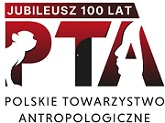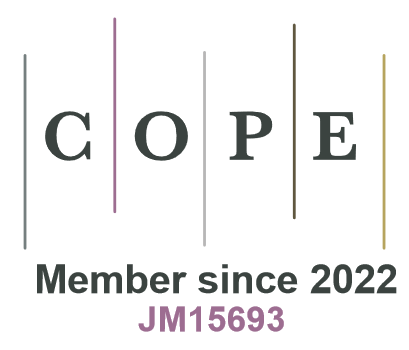Socioeconomic factors and lifestyle affecting the variability of menstrual cycle characteristics in women from Central Poland
DOI:
https://doi.org/10.2478/anre-2019-0024Keywords:
menses, regularity, bleeding, SESAbstract
Regularity, length of the cycle and duration of menstrual flow are a reflection of women health. The purpose of the research was to assess the relationships between socioeconomic status, cycle length, duration of menses, regularity and dysmenorrhea. A survey was conducted among 896 healthy women from Łódź and Warsaw (Poland), aged 15.71–26.98. Women who were menarche at least 3 years ago were asked to complete the survey. Women were asked about cycle length (number of days), duration of menstrual flow, regularity of the cycle, dysmenorrhea, birth place, parental education level, attendance at physical education classes, participation in additional sports activities, self-assessment of stress levels at home and at school/university, and smoking. For data analysis, t-test, analysis of variance, and chi-square were used, and p<0.05 was considered to be statistically significant. There were no significant relationships between the mean cycle length, regularity and the environmental factors, except for differences in the average length of the menstrual cycle in women from Łódź who attend additional sports activities. Women who are more physically active are characterized by a shorter menstrual cycle. In terms of the length of the menstrual flow, daughters of better educated fathers were characterized by longer menses. In contrast, dysmenorrhea was associated with longer menstrual periods and longer menstrual bleeding, as well as with higher levels of stress, both at home and at school. Environmental factors affected the features of menstruation cycles in women from Central Poland.
Downloads
References
ACEA Report: Vehicles in use – Europe, 2017. Available at: https://www.acea.be/uploads/statistic_documents/ACEA_Report_Vehicles_in_use-Europe_2017.pdf [accessed 2019 May 21].
View in Google Scholar
Aziz AA, Kurnia N, Hartati H, Purnamasari AB. 2018. Menstrual cycle length in women ages 20–30 years in Makassar. J Phys Conf Ser 1028:012019.
View in Google Scholar
Bae J, Park S, Kwon JW. 2018. Factors associated with menstrual cycle irregularity and menopause. BMC Womens Health 18:36.
View in Google Scholar
Bernardi M, Lazzeri L, Perelli F, Reis FM, Petraglia F.2017. Dysmenorrhea and related disorders. F1000Research 6:1645.
View in Google Scholar
Coelho LS, Brito LM, Chein MB, Mascarenhas TS, Costa JP, Nogueira AA, et al. 2014. Prevalence and conditions associated with chronic pelvic pain in women from São Luís, Brazil. Braz J Med Biol Res 47:818–25.
View in Google Scholar
De Sanctis V, Bernasconi S, Bianchin L, Bona G, Bozzola M, Buzi F, et al. 2014. Onset of menstrual cycle and menses features among secondary school girls in Italy: a questionnaire study on 3,783 students. Indian J Endocrinol Metab 18(1):84–92.
View in Google Scholar
De Sanctis V, Soliman A, Bernasconi S, Bianchin L, Bona G, Bozzola M, et al. 2015. Primary dysmenorrhea in adolescents: prevalence, impact and recent knowledge. PER13(2):512–20.
View in Google Scholar
Drosdzol-Cop A, Bąk-Sosnowska M, Sajdak D, Białka A, Kobiołka A, Franik G, et al. 2017.Assessment of the menstrual cycle, eating disorders and self-esteem of Polish adolescents. J Psychosom Obstet Gynaecol 38(1):30–36.
View in Google Scholar
Ellison PT, Lager C.1986. Moderate recreational running is associated with lowered salivary progesterone profiles in women. Am J Obstet Gynecol 154:1000–03.
View in Google Scholar
Elshiekh M, Ali Mohammed AM. 2011. Influence of socioeconomic status in the age at the of menarche and duration of menstrual bleeding. Mater Sociomed 23(4):195–99.
View in Google Scholar
Fehring RJ, Schneider M, Raviele K. 2006. Variability in the phases of the menstrual cycle. J Obstet Gynecol Neonatal Nurs 35(3):376–84.
View in Google Scholar
Fenster L, Waller K, Chen J, Hubbard AE, Windham GC, Elkin E, et al. 1999. Psychological stress in the workplace and menstrual function. Am J Epidemiol 149(2):127–34.
View in Google Scholar
Fischetto G, Sax A.2013. The menstrual cycle and sport performance. Obes Rev 28(3/4):57–69.
View in Google Scholar
Geetha P, Chenchuprasad C, Sathyavathi RB, Bharathi T, Surendranadha RK,Reddy K.2016. Effect of socioeconomic conditions and lifestyles on menstrual characteristics among rural women. J Women’s Health 5(1):1–5.
View in Google Scholar
Gudmundsdottir SL, Flanders WD, Augestad LB. 2011. A longitudinal study of physical activity and menstrual cycle characteristics in healthy Norwegian women – The Nord-Trøndelag Health Study. NorskEpidemiologi 20(2):163–71.
View in Google Scholar
Habibi N, Huang MS, Gan WY, Zulida R, Safavi SM. 2015. Prevalence of primary dysmenorrhea and factors associated with its intensity among undergraduate students: a cross-sectional study. Pain Manag Nurs 16(6):855–61.
View in Google Scholar
Harlow SD, Ephross SA.1995. Epidemiology of menstruation and its relevance to women’s health. Epidemiol Rev 17:265–86.
View in Google Scholar
Harlow SD, Matanoski GM. 1991. The association between weight, physical activity, and stress and variation in the length of the menstrual cycle. Am J Epidemiol 133(1):38–49.
View in Google Scholar
Hillard PJA. 2012. Benign diseases of the female reproductive tract. In: JS Berek, editor. Berek and Novak’s Gynecology, 15th edition. Philadelphia: Lippincott Williams and Wilkins. 374–437.
View in Google Scholar
Hornsby PP, Wilcox AJ, Weinberg CR. 1998. Cigarette smoking and disturbance of menstrual function. Epidemiology 9(2):193–98.
View in Google Scholar
Jahanfar S. 2012. Genetic and environmental determinants of menstrual characteristics. Indian J Hum Genet 18(2):187–92.
View in Google Scholar
Jandíková H, Dušková M,Stárka L.2017. The influence of smoking and cessation on the human reproductive hormonal balance. Physiol Res 66(Suppl.3):323–31.
View in Google Scholar
Jeon GE, Cha NH, Sok SR. 2014. Factors influencing the dysmenorrhea among Korean adolescents in middle school. J Phys Ther Sci. 26:1337–43.
View in Google Scholar
Jeyaseelan L, Rao PSS. 1995. Effect of occupation on menstrual cycle length: causal model. Hum Biol 67(2):283–90.
View in Google Scholar
Ju H, Jones M, Mishra G. 2014. The prevalence and risk factors of dysmenorrhea. Epidemiol Rev 36:104–13.
View in Google Scholar
Lyngsø J, Ramlau-Hansen CH, Høyer BB, Støvring H, Bonde JP, Jönsson BA, et al. 2014. Menstrual cycle characteristics in fertile women from Greenland, Poland and Ukraine exposed to perfluorinated chemicals: a cross-sectional study. Hum Reprod 29(2):359–67.
View in Google Scholar
Emmanuel A, Achema G, Gimba SM, Mafuyai MJ, Afoi BB, Ifere IO. 2013. Dysmenorrhea, pain relief strategies among a cohort of undergraduates in Nigeria. J Int Med Res 2(2):142–46.
View in Google Scholar
Makowiec-Dąbrowska T, Hanke W, Sprusińska E, Radwan-Włodarczyk Z, Koszada-Włodarczyk W.2004. Menstrual disorders. Is this a problem to be handled by occupational medicine physician?. Medycyna Pracy 55(2):161–67. In Polish.
View in Google Scholar
Merklinger-Gruchala A, Jasienska G, Kapiszewska M. 2017. Effect of air pollution on menstrual cycle length – a prognostic factor of women’s reproductive health. Int J Environ Res Public Health 14(816). doi:10.3390/ijerph14070816.
View in Google Scholar
Nagma S, Kapoor G, Bharti R, Batra A, Batra A, Aggarwal A, et al.2015. To evaluate the effect of perceived stress on menstrual function. J Clin Diagn Res 9. doi: 10.7860/JCDR/2015/6906.5611.
View in Google Scholar
Najafi N, Khalkhali H, Moghaddam A,Tabrizi F,Zarrin R.2018. Major dietary patterns in relation to menstrual pain: a nested case control study. BMC Women’s Health 18(1):69.
View in Google Scholar
Omidvar S, Amiri FN, Firouzbakht M, Bakhtiari A, Begum K. 2019. Association between physical activity, menstrual cycle characteristics and body weight in young South Indian females. Int J Women’s Health 7(3).
View in Google Scholar
Omidvar S, Begum K. 2012. Characteristics and determinants of primary dysmenorrhea in young adults. Am J Med 3(1) 8–13.
View in Google Scholar
Palm-Fischbacher S, Ehlert U. 2014. Dispositional resilience as a moderator of the relationship between chronic stress and irregular menstrual cycle. J Psychosom Obstet Gynaecol 35:42–50.
View in Google Scholar
Panidis D, Tziomalos K, Papadakis E, Chatzis P, Kandaraki EA, Tsourdi EA et al. 2015. Associations of menstrual cycle irregularities with age, obesity and phenotype in patients with polycystic ovary syndrome. Hormones 14(3):431–37.
View in Google Scholar
Pawłowski B. 2004. Prevalence of menstrual pain in relation to the reproductive life history of women from the Mayan rural community. Ann Hum Biol 31(1):1–8.
View in Google Scholar
Popat VB, Prodanov T, Calis KA, Nelson LM. 2008. The menstrual cycle: a biological marker of general health in adolescents. Ann N Y Acad Sci 1135:43–51.
View in Google Scholar
Rowland AS, Baird DD, Long S, Wegienka G, Harlow SD, Alavanja M, et al. 2002. Influence of medical conditions and lifestyle factors on the menstrual cycle. Epidemiology 13(6):668–74.
View in Google Scholar
Sanyal S,RayS.2008. Variation in the menstrual characteristics in adolescents of West Bengal. Singapore Med J 49(7):542–50.
View in Google Scholar
Shortridge LA. 1988. Assessment of menstrual variability in working populations. Reprod Toxicol 2:171–76.
View in Google Scholar
Statistics Poland.2015. Warsaw (Poland): Statistics Poland [accessed 2019May 20]. Available at: https://stat.gov.pl/statystyka-regionalna/rankingi-statystyczne/miasta-najwieksze-pod-wzgledem-liczby-ludnosci/.
View in Google Scholar
Statistics Poland. 2017. Warsaw (Poland): Statistics Poland [accessed 2019May 20]. http://stat.gov.pl/statystyka-regionalna/rankingi-statystyczne/.
View in Google Scholar
Statistics Poland. 2018. Warsaw (Poland): Statistics Poland [accessed 2019May 20]. Available at: https://stat.gov.pl/obszary-tematyczne/ludnosc/ludnosc/powierzchnia-i-ludnosc-w-przekroju-terytorialnym-w-2017-r-,7,14.html.
View in Google Scholar
Stepaniak U, Micek A, Waśkiewicz A, Bielecki W, Drygas W, Janion M. et al. 2016. Prevalence of general and abdominal obesity and overweight among adults in Poland. Results of the WOBASZ II study (2013–2014) and comparison with the WOBASZ study (2003–2005). Polish Arch Intern Med 126(9):662–71.
View in Google Scholar
Sundell G, Milsom I, Andersch B.1990. Factors influencing the prevalence and severity of dysmenorrhoea in young women. BJOG 97(7):588–94.
View in Google Scholar
Toft G, Axmon A, Lindh CH, Giwercman A, Bonde JP. 2008. Menstrual cycle characteristics in European and Inuit women exposed to persistent organochlorine pollutants. Hum Reprod 23(1):193–200.
View in Google Scholar
Wang ET, Cirillo PM, Vittinghoff E, Bibbins-Domingo K, Cohn BA, Cedars MI. 2011. Menstrual irregularity and cardiovascular mortality. J Clin Endocrinol Metab 96(1):114–18.
View in Google Scholar
Wang L, Wang X, Wang W, Chen C, Ronnennberg AG, Guang W, et al. 2004. Stress and dysmenorrhoea: a population based prospective study. Occup Environ Med 61(12):1021–26.
View in Google Scholar
WHO. 2013. Nutrition, physical activity and obesity, Poland. 2013. Available at: http://www.euro.who.int/__data/assets/pdf_file/0020/243317/Poland-WHO-Country-Profile.pdf?ua=1 [accessed 2019May 20].
View in Google Scholar
Windham GC, Elkin EP, Swan SH, Waller KO, Fenster L. 1999. Cigarette smoking and effects on menstrual function. Obstet Gynecol 93(1):59–65.
View in Google Scholar
Yermachenko A, Dvornyk V. 2014. Nongenetic determinants of age at menarche: a systematic review. BioMed Res Int 2014:371583. doi:10.1155/2014/371583.
View in Google Scholar
Downloads
Published
How to Cite
Issue
Section
License
Copyright (c) 2019 Anthropological Review

This work is licensed under a Creative Commons Attribution-NonCommercial-NoDerivatives 4.0 International License.








